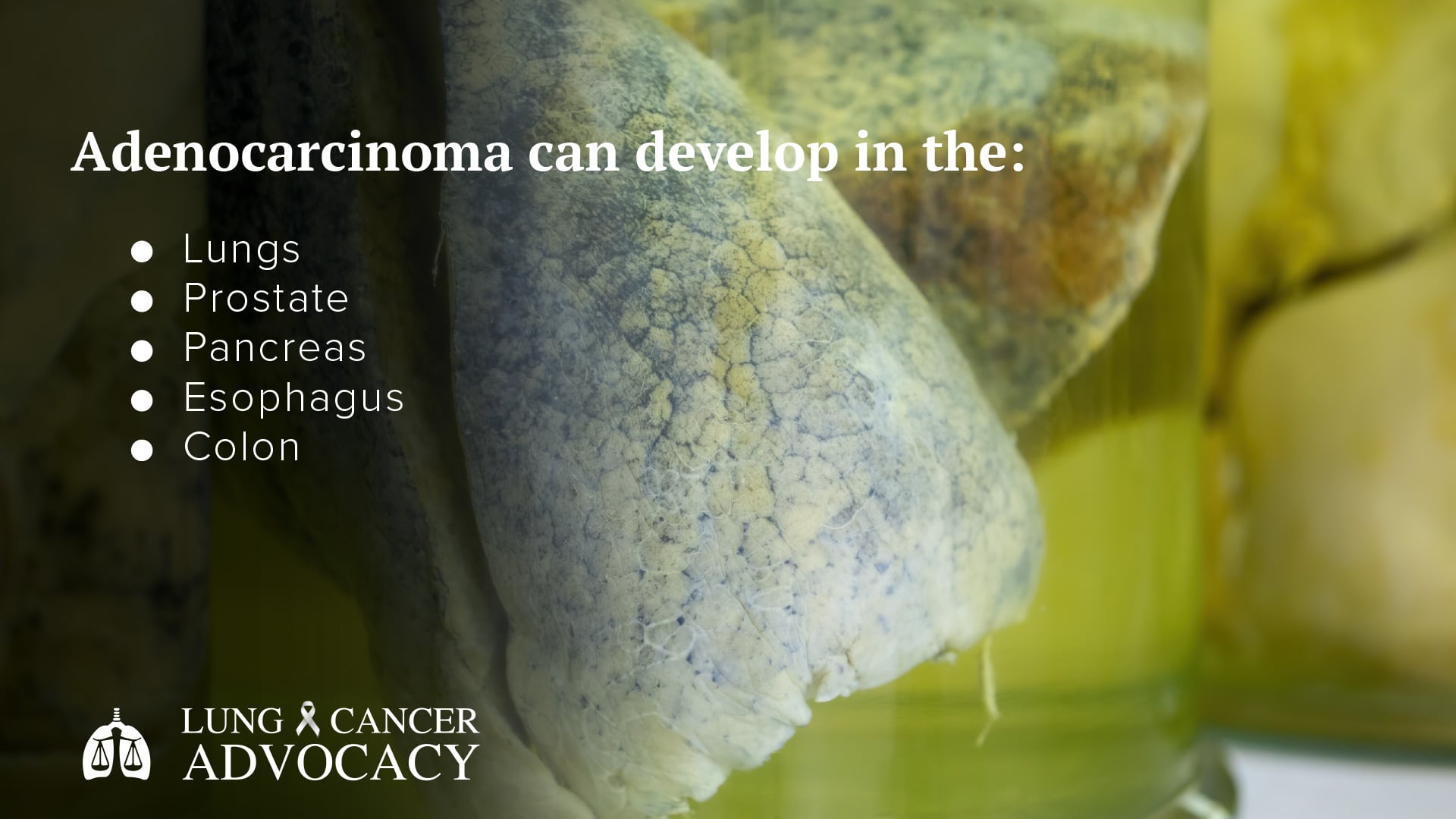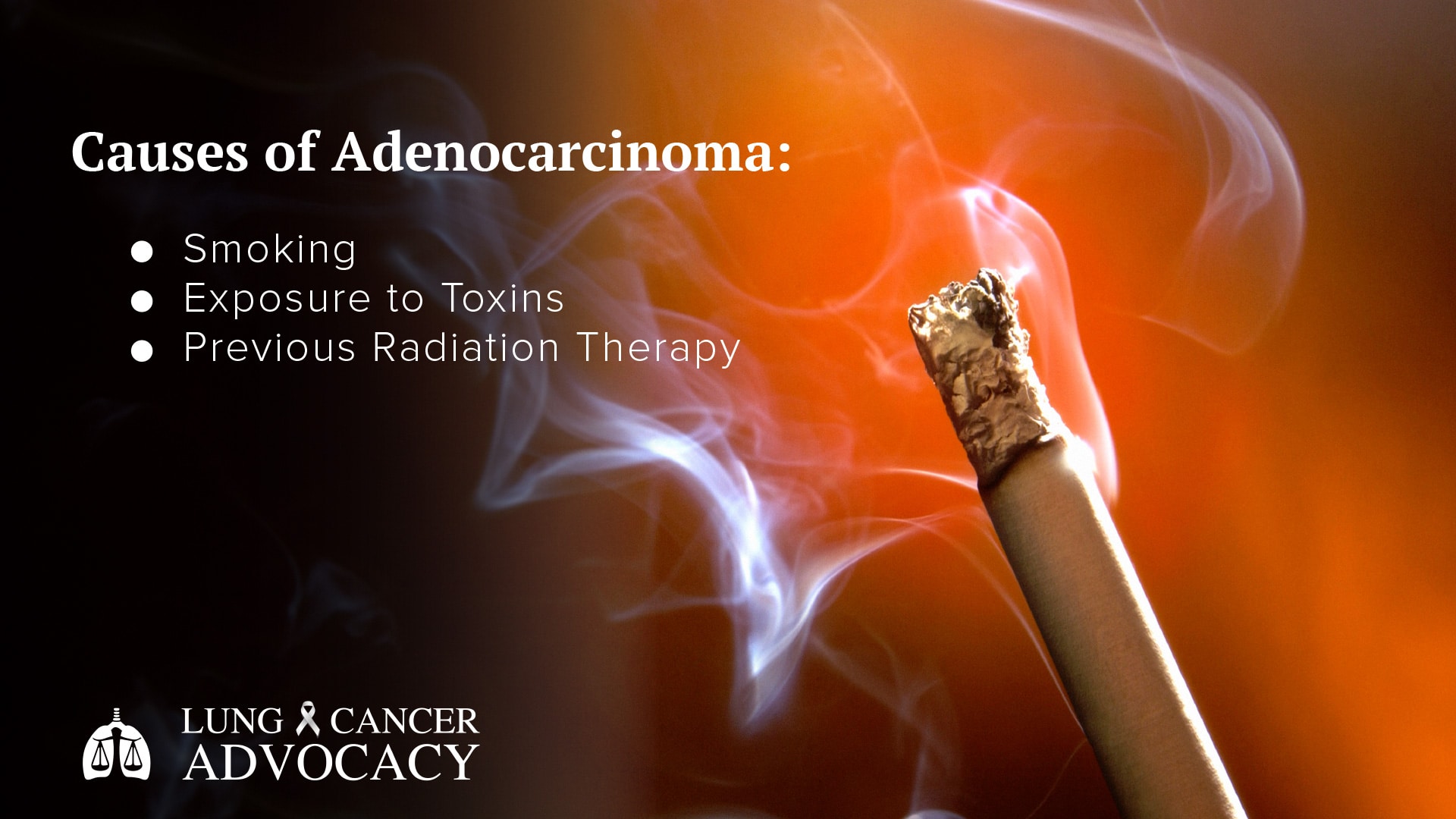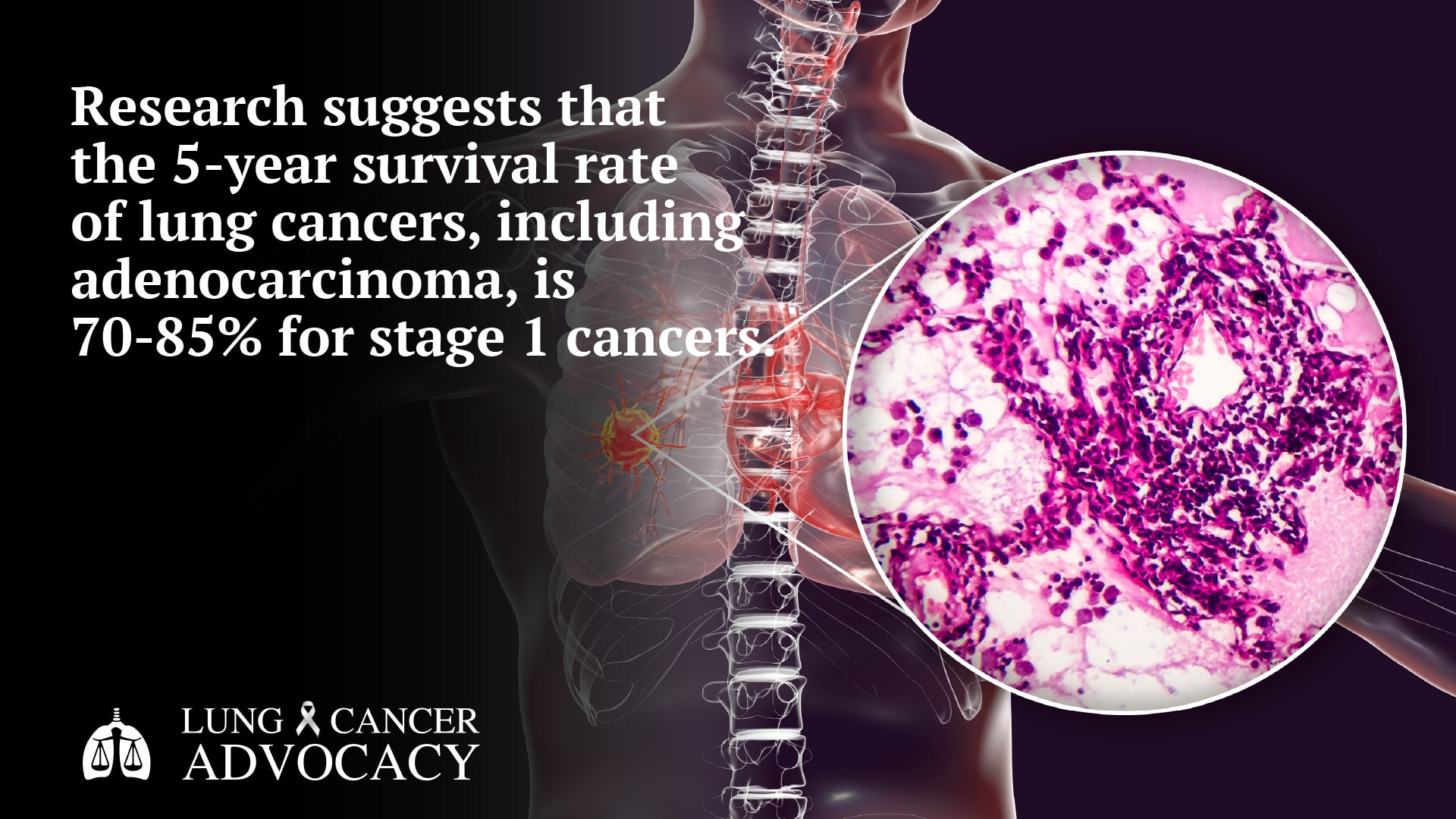Adenocarcinoma
The human body is comprised of trillions of cells. Over your lifetime, these cells grow, divide, and then die. This is part of a normal cycle. When cells in different parts of the body grow out of control, cancer can develop, such as adenocarcinoma. Cancer causes cells to act abnormally, either making too many cells or abnormal cells, or cells don’t die like they should.
Eventually, these abnormal or out of control cells can crowd out normal healthy cells. As a result, the body cannot function the way it should. Adenocarcinoma is one type of cancer that develops when the cells in mucus-secreting glands in the body become out of control.
What is Adenocarcinoma?
Adenocarcinoma is a type of cancer that begins in the mucus-secreting glands of the body. Glands are located in the lining of many organs and help the body stay moist and organs stay fully functional. Adenocarcinoma develops when the cells in these glands grows out of control. Cancer can then spread to nearby tissue and organs, or distant parts of the body.
Adenocarcinoma can develop in many different areas.

- Lungs: Adenocarcinoma is the most common type of non-small cell lung cancer. It accounts for around 40% of all lung cancers.
- Prostate: Adenocarcinoma accounts for 99% of all prostate cancers.
- Pancreas: Exocrine pancreatic tumors are adenocarcinomas that form in the ducts of the pancreas.
- Esophagus: Cancer developing in the glandular cells of the esophagus are adenocarcinomas.
- Colon: Adenocarcinomas developing in the intestinal glands inside the rectum or colon accounts for 95% of rectal and colon cancers.
What Causes Adenocarcinoma?
There are three primary factors that cause adenocarcinoma.

- Smoking: Smoking tobacco products is the leading cause adenocarcinoma. ‘
- Exposure to Toxins: Exposure to toxins in your home or work environment.
- Previous Radiation Therapy: If you have previously undergone radiation therapy, you are at a higher risk of developing adenocarcinoma.
Symptoms of Adenocarcinoma
Depending on where the cancer is located and how severe it is, you may or may not have symptoms early on. Also, adenocarcinoma in the lungs can cause symptoms that are similar to other health conditions, some of which are minor in comparison. It is important to talk to your doctor about your symptoms, especially if you smoke, have a history of smoking or have other risk factors for lung cancers.
Some of the symptoms that people with adenocarcinoma of the lungs report include:
- Chest pain
- Difficulty breathing
- Wheezing
- Hoarseness
- Loss of appetite
- Unexplained weight loss
As you can see, many of these symptoms are also symptoms of other illnesses or diseases. Only your doctor can assess your symptoms and use diagnostic tools to determine the cause of your symptoms.
How is Adenocarcinoma Diagnosed?
Diagnosing adenocarcinoma begins with a thorough examination and a review of your medical history. From there, your doctor may order some imaging and laboratory tests, such as:
- Biopsy: A biopsy is a procedure where the doctor removes a small piece of tissue from the body for examination in a lab. The examination can tell whether there are cancerous cells, and if the cancer originated at the biopsy site.
- Bronchoscopy: A small tube is inserted through the mouth or nose to look down into the lungs. A bronchoscopy can help your doctor see your lungs, assess masses and perform a biopsy if needed.
- Computed Tomography (CT): A CT scan is similar to an X-ray, but it collects three-dimensional images of the tissues and structures in the body. CT scans can identify where the cancer is, and can be used to monitor how cancer responds to treatment.
- Magnetic Resonance Imaging (MRI): An MRI is an imaging technique that uses radiofrequency waves to create detailed images of the body. An MRI can create cross-sectional images that show various body parts from different angles.
- Blood Tests: Blood tests are not always effective at detecting cancer, but they can help your doctor assess your overall health by measuring certain chemicals, substances and nutrients in your body.
- Cytology: Your doctor may collect phlegm or fluid from around your lung for examination under a microscope to see if cancerous cells are present.
- Mediastinoscopy: A doctor inserts a scope through the skin to biopsy your lymph nodes between your lungs. This can tell the doctor if the cancer has spread to those lymph nodes.
You may not need all of these tests in order to get a diagnosis. The type of tests your doctor orders will depend on a variety of factors related to you and your health.
Treatment Options
Adenocarcinoma is often treated similarly to other types of lung cancer. However, the exact treatments you need will depend on the location of the cancer, how large a tumor is, if the cancer has spread and whether there are lymph nodes involved. Treatment options for cancer that is very localized will be different than treatment options for cancer that has spread (metastasized).
There are three primary modes of treating adenocarcinoma. These are:
- Chemotherapy: Special drugs are used to damage or destroy cancer cells.
- Radiation: Radiation targets cancer and destroys it.
- Surgery: Surgery may be needed to remove cancerous tissue or tumors.
In some cases, one or more of these treatment methods may be used together for optimal results. It is fairly common for a cancer treatment plan to include multiple treatment strategies.
Remember that cancer treatment may have some side effects. Talk to your doctor about your treatment options and ask specific questions about side effects.
Prognosis for Adenocarcinoma
The prognosis for lung cancers that are advanced at the time of diagnosis are generally poor. However, there are many factors that can influence your prognosis, such as your overall health, where the cancer is located, and how much it has spread. Your body’s response to treatment will also impact your overall prognosis.

Research suggests that the 5-year survival rate of lung cancers, including adenocarcinoma, is 70-85% for stage 1 cancers. That drops to 30% for locally advanced cancers, and 5% for cancer that has mestastasized (spread) to distant parts of the body.
To improve your prognosis, talk to your doctor about things you can do. Don’t smoke or be around secondhand smoke. Avoid exposure to harmful chemicals or toxic substances. Eat a healthy diet and exercise regularly. Follow your treatment plan and talk to your doctor if your health seems to worsen.
Learn More about Lung Injuries
For many years, health experts have warned consumers about the dangers of smoking tobacco products. Sadly, smoking continues to be a leading cause of adenocarcinoma and other types of lung cancer. For patients who have lung injuries caused by a dangerous product or a toxic workplace, Lung Cancer Advocacy is here to help.
Contact us to learn more about lung injuries and your legal rights. For a FREE case evaluation and to discuss your situation, call us at (866) 541-5812, or sign up for more information online.
Sources:
- https://www.cancer.ca/en/cancer-information/cancer-type/cancer-of-unknown-primary/treatment/adenocarcinoma-of-unknown-primary/?region=on
- https://www.lungcancercanada.ca/Lung-Cancer.aspx
- https://www.cancercenter.com/adenocarcinoma
- https://www.healthline.com/health/cancer/adenocarcinoma-symptoms#symptoms
- https://www.ncbi.nlm.nih.gov/books/NBK519578/

